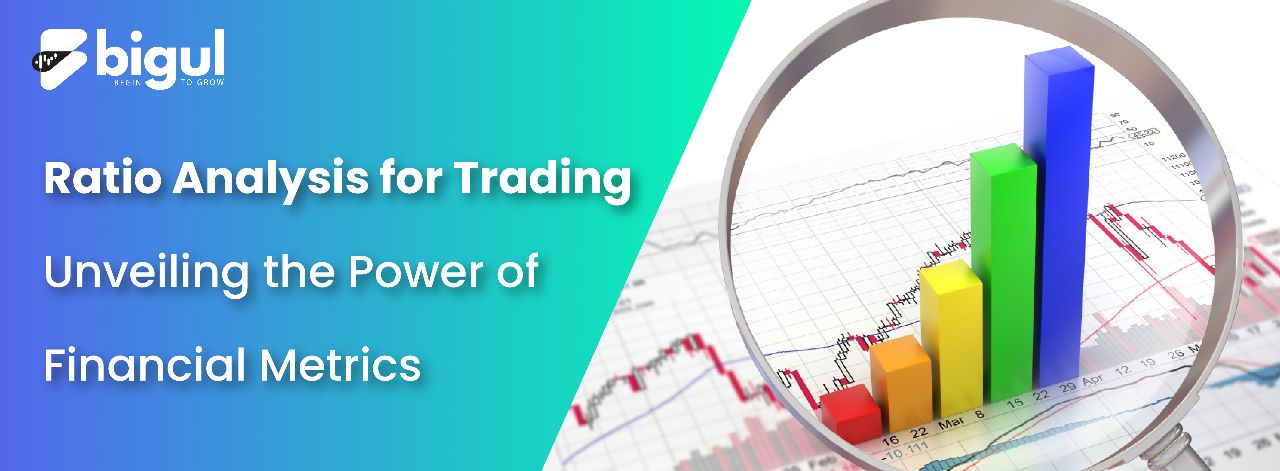Welcome to the world of trading, where every decision counts and knowledge is key. In this dynamic realm, mastering the art of ratio analysis can be a game-changer for astute investors and traders. Ratio analysis unveils the hidden insights of financial metrics, providing a profound understanding of a company’s performance and potential.
By delving into the crucial aspects of liquidity, profitability, efficiency, and solvency, we can unlock the secrets behind successful trading strategies. This article will shed light on an illuminating journey into the power of ratio analysis, empowering you to make informed and lucrative trading choices.
What is Ratio Analysis?
Ratio analysis is a fundamental tool used to dissect a company’s financial statements, examining key line items to assess profitability, liquidity, solvency, and efficiency.
Primarily conducted by external analysts, the analysis heavily relies on current and past financial statements as vital sources of information.
By scrutinising this data, analysts gauge a company’s financial performance, discerning improvements or deteriorations in its position. This critical process unveils invaluable insights, aiding investors and stakeholders in making informed decisions regarding the company’s potential and overall health.
Types of Financial Ratios
Financial ratios are crucial to evaluate a company’s financial health. They reveal a company’s profitability, liquidity, solvency, and efficiency. Financial ratios include four primary categories:
Profitability Ratios: These ratios measure a company’s ability to generate profits relative to its revenue, assets, or equity. They are essential for assessing how effectively a company is utilising its resources to generate earnings. Some common profitability ratios include the following:
- Gross Profit Margin: (Gross Profit/Revenue) x 100
- Net Profit Margin: (Net Profit/Revenue) x 100
- Return on Assets (ROA): (Net Income/Total Assets) x 100
- Return on Equity (ROE): (Net Income/Shareholders’ Equity) x 100
Liquidity Ratios: Liquidity ratios assess a company’s capability to meet debt obligations using current assets. During financial crises, selling these assets can provide cash to pay off debts, ensuring the company’s short-term financial stability. Common liquidity ratios include:
- Current Ratio: Current Assets / Current Liabilities
- Quick Ratio (Acid-Test Ratio): (Current Assets – Inventory)/Current Liabilities
- Cash Ratio: Cash and Cash Equivalents / Current Liabilities
Solvency Ratios: Solvency ratios determine a company’s long-term viability by assessing its debt levels relative to assets, annual earnings, and equity. These ratios provide insights into a company’s financial leverage and stability. Common solvency ratios include:
- Debt-to-Equity Ratio: Total Debt / Shareholders’ Equity
- Debt-to-Asset Ratio: Total Debt / Total Assets
- Interest Coverage Ratio: Earnings Before Interest and Taxes (EBIT) / Interest Expense
Efficiency Ratios: Efficiency ratios, also known as activity ratios, measure how effectively a company manages its assets and liabilities to generate sales or revenue. These ratios are useful in assessing a company’s operational efficiency. Common efficiency ratios include:
- Inventory Turnover: Cost of Goods Sold/Average Inventory
- Accounts Receivable Turnover: Net Credit Sales/Average Accounts Receivable
- Accounts Payable Turnover: Purchases/Average Accounts Payable
Each type of ratio provides different insights, and a comprehensive financial analysis often involves using multiple ratios together to get a holistic view of a company’s financial health.
Interpreting Financial Ratios: Interpreting financial ratios is crucial for gaining insights into a company’s financial health and performance. Here are some key points to consider when interpreting financial ratios:
- Benchmarking: Compare the company’s ratios with industry averages or competitors’ ratios to assess how it performs relative to others in the same sector.
- Trend Analysis: Analyse the ratios over time to identify trends and potential areas of improvement or concern.
- Consistency: Look for consistency and stability in ratios over time; significant fluctuations may signal underlying issues.
- Thresholds: Understand the standard or acceptable ranges for each ratio to determine if the company meets industry standards.
- Interrelationships: Consider how different ratios relate to each other. An improvement in one ratio may impact others positively or negatively.
- Financial Context: Interpret ratios within the company’s broader financial context, considering its size, industry, and business model.
- Potential Red Flags: Identify ratios that deviate significantly from norms, as they may indicate financial risks or mismanagement.
- Business Cycle: Recognise that some ratios can be affected by economic cycles, influencing the company’s performance.
- Non-Financial Factors: Supplement ratio analysis with information from non-financial factors like market trends, management, and industry outlook.
- Limitations: Understand the limitations of ratios; they provide valuable insights but should not be the sole basis for decision-making.
By thoroughly interpreting financial ratios and combining them with qualitative analysis, investors, creditors, and managers can make informed decisions about a company’s financial strength, weaknesses, and future prospects.
Key Financial Ratios for Trading
Financial ratios can help traders assess a company’s financial health. These ratios can assist traders in making intelligent stock and financial instrument trades. Some key financial ratios for trading include:
- Price-to-Earnings Ratio (P/E Ratio): The P/E Ratio compares a company’s stock price to its EPS. A low P/E ratio signifies undervaluation. Whereas a high ratio shows overvaluation. Traders use P/E ratios to assess a stock’s relative attractiveness and potential for investment. Lower P/E ratios may indicate better opportunities for buying, while higher ratios may signal caution or selling prospects.
- Earnings Per Share (EPS): Earnings Per Share (EPS) measures a company’s earnings per share of ordinary stock. It shows traders the company’s per-share earnings. Higher EPS values are generally favourable, indicating better earnings potential and potential for greater returns on investment in the company’s stock.
- Return on Equity (ROE): Return on Equity (ROE) measures a company’s profitability relative to shareholders’ equity. It calculates the percentage of net income generated per rupees of equity investment. A higher ROE indicates that the company is more efficient in utilising shareholders’ funds to generate profits. This makes it an essential metric for assessing a company’s financial performance and potential investment attractiveness.
- Debt-to-Equity Ratio: Debt-to-Equity ratios relate a company’s total debt to shareholders’ equity. High ratios suggest a greater reliance on debt funding, which can raise financial risk owing to increased interest payments and debt repayment issues. Traders use this ratio to assess a company’s financial stability and leverage before making investment decisions.
Wrapping Up
Ratio analysis helps traders assess a company’s finances. P/E, debt-to-equity, and current ratios can help traders find investment possibilities and weigh stock trading risks. However, it’s crucial to complement ratio analysis with qualitative factors and market trends to make well-informed and profitable trading decisions.







.jpg)
.jpg)
